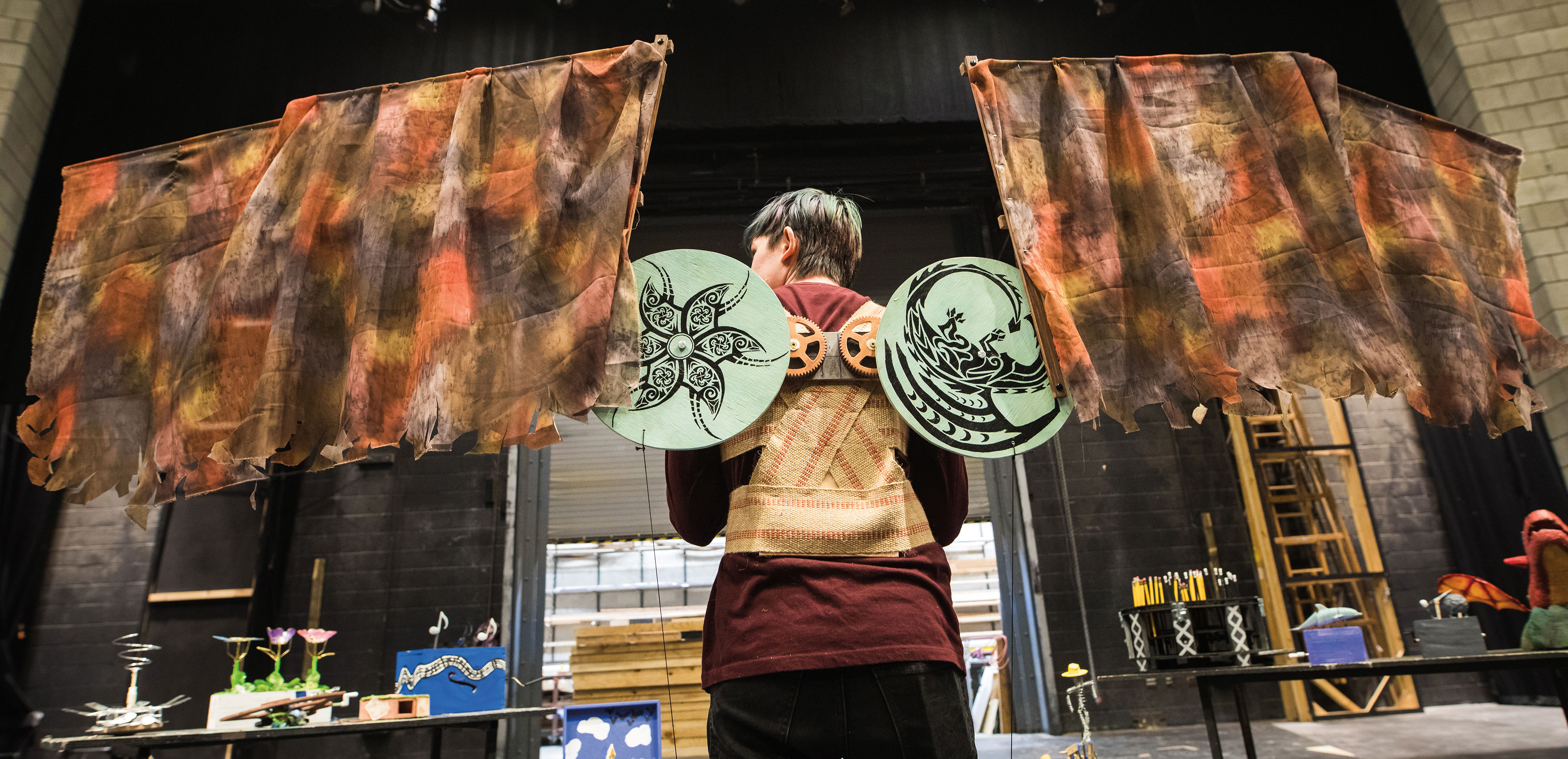
Growing up, she wanted to understand it all. How birds flew, how trees grew, how nutrients fueled all of it. Why the rotary phone in the box of dead electronics didn’t work and what she could do to fix it (by soldering a random wire, it turns out, at the age of 8 or 9). Christina Haden (pictured) was an insatiably curious kid. And it was her father, more than anyone else, who stoked that curiosity, spending hours with her talking about subjects that varied from biology to planetary travel and answering (most of) the million questions she lobbed back at him.
 “My mind would just explode talking to my dad,” says Haden, a teaching associate professor in the Department of Mechanical Engineering and Mechanics. “I loved how there seemed to be no end to how deep the questions could go. I was always asking, ‘Well, what about this? What about that?’”
“My mind would just explode talking to my dad,” says Haden, a teaching associate professor in the Department of Mechanical Engineering and Mechanics. “I loved how there seemed to be no end to how deep the questions could go. I was always asking, ‘Well, what about this? What about that?’”
Haden is now the one answering questions and stoking the curiosity of her students, but she has lost none of her wonder and delight over how things work. In fact, it’s become one of the guidelines of her teaching philosophy.
“If I want my students to be excited about the material I’m teaching them, I have to be excited about the material,” she says. “And so that’s what I do. I make sure I come into the classroom, and I’m saying to them, ‘This is so cool! And here’s why it’s so cool.’”
Turning her students on to the coolness of engineering concepts got even easier this past spring. Together with Melpomene Katakalos, an associate professor of theatre in Lehigh’s College of Arts and Sciences, Haden created the course Leonardo da Vinci, the Artist and Engineer. The pair designed the class to combine art and engineering and encourage students—from both engineering and non-engineering majors—to draw inspiration from the Italian polymath’s ability to observe and create.
“We live in a digital world,” says Haden. “But we need our students to have gained experience that becomes reference knowledge and intuition for their future as engineers, and that doesn’t come from a screen. It comes from seeing things and building things.”
Like da Vinci, students kept a sketchbook to write about, draw, and explain the concepts they observed, and Haden constantly reinforced those ideas with props—a tiny engine powered by the steam off a coffee cup, crank toys, a cam and follower mechanism that illustrated da Vinci’s early robot design. And she didn’t just show them these devices. She combined her ability to closely read her students with her very real fascination with what she was teaching them.
“We learn through multisensory inputs, not simply by being spoken to,” she says. “So how I move my hands, and how animated I am is one part of that. Having props that students can see, feel, and envision is another way. So with me, every class is like, ‘Look at this! Look at that!’ And when I’m hitting the right tone, it’s almost like I hit resonance. There’s this symphony between what I’m saying and how the students respond.”
 When it came to their final project for the class—designing a piece of kinetic art—that resonance was in full effect. What they came up with blew Haden’s mind. One student created wings with an eight-foot span that gently flapped when he lifted his shoe. Another built a garden operated by a cam system that caused flowers to emerge, open, and close.
When it came to their final project for the class—designing a piece of kinetic art—that resonance was in full effect. What they came up with blew Haden’s mind. One student created wings with an eight-foot span that gently flapped when he lifted his shoe. Another built a garden operated by a cam system that caused flowers to emerge, open, and close.
“Everyone built something that was moving,” she says. “My goal was for them to infuse art into engineering, and that’s exactly what they did. Their brains just lit up, and wow, did they go above and beyond.”
Such an infusion is key, she says, because art is essential to engineering. Blending the two encourages students to use both sides of their brains, and she believes that tactile experiences will make for the best generation of engineers.
“Engineering is boring without art, and as a discipline, art has inspired so much progress, allowing us to dream outside the scope of what we see, into the realm of what could be,” she says.
It’s a boundless realm. One in which Haden believes all students are capable of succeeding, of making an impact with their own unique perspective. So along with Katakalos, Haden will continue the course’s evolution, expanding its creative potential and committing herself fully to achieving a symphony of curiosity, excitement, and understanding as students discover how art and engineering can collide to beautiful, meaningful effect. Her gauge for that resonance is simple.
“They get a spark in their eye,” she says. “And when that spark is there, that’s when all that raw talent and raw potential starts to shine.”
Photos by Christa Neu / Lehigh University

